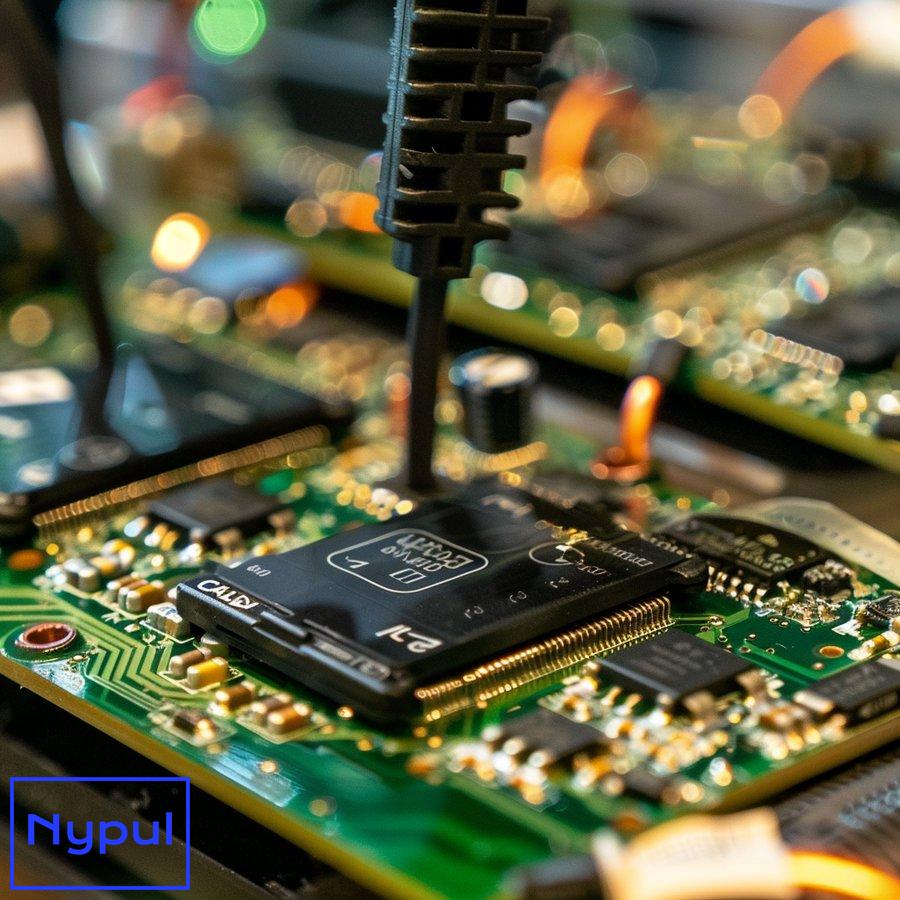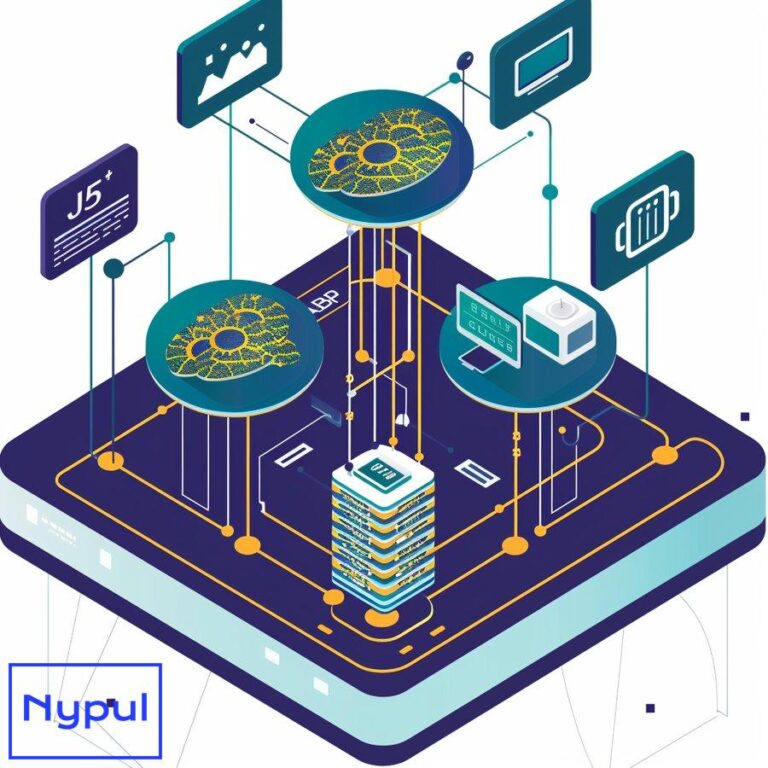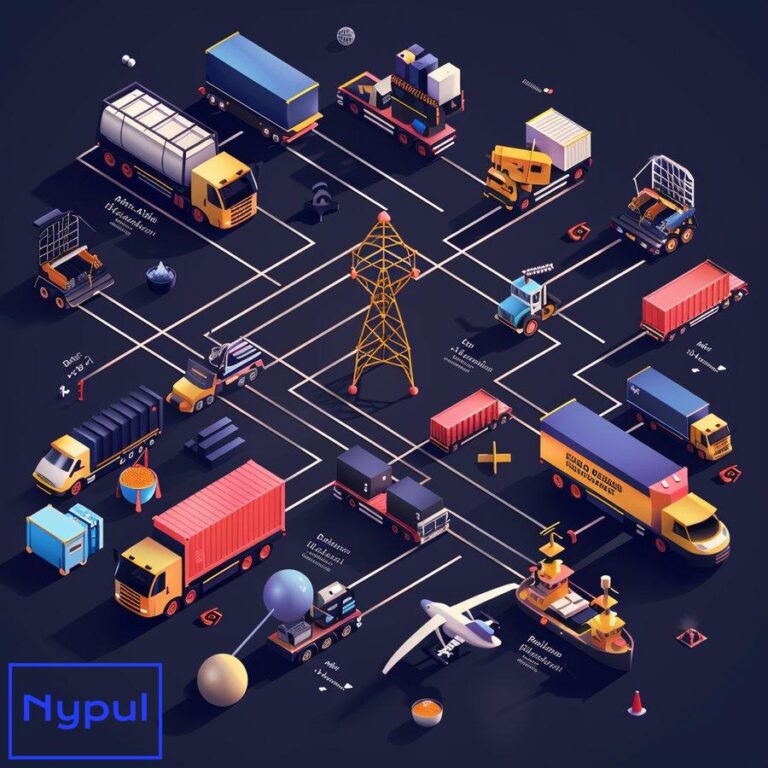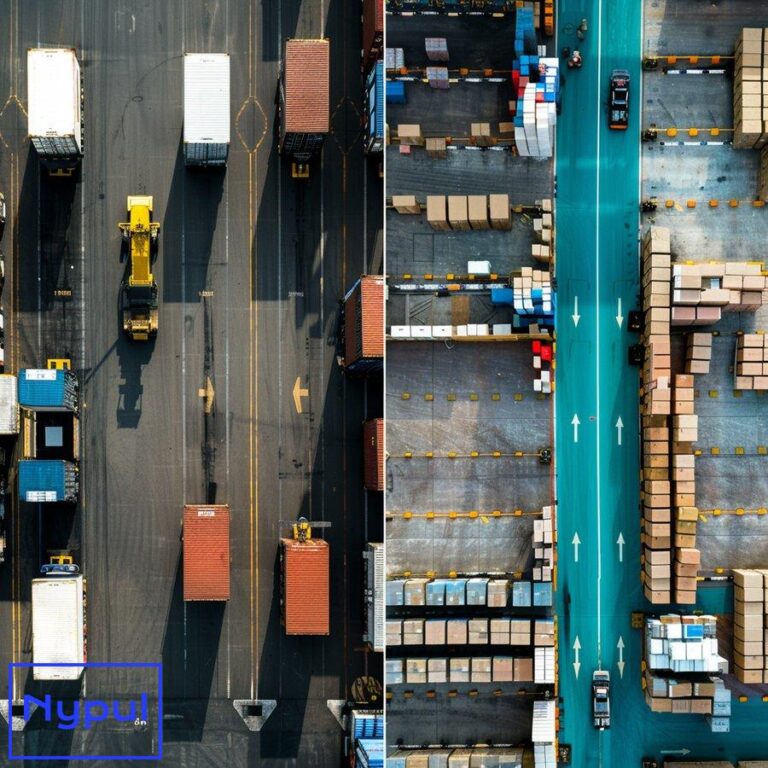What Is Secure Parcel Delivery
What is Secure Parcel Delivery?
Secure parcel delivery is a specialized shipping service that provides enhanced protection and tracking for valuable or sensitive items. This type of delivery goes beyond standard shipping by implementing additional security measures to ensure the safe transport and handling of parcels from origin to destination.
![]()
Key Features of Secure Parcel Delivery
Tamper-Evident Packaging: Secure parcel delivery utilizes packaging materials designed to detect and deter unauthorized access. Tamper-evident seals, tape, and labels are used to indicate if a package has been opened or compromised during transit.
Real-Time Tracking: Parcels are equipped with advanced tracking technologies, such as GPS or RFID tags, allowing for continuous monitoring of their location and status. This real-time visibility enables quick detection and response to any deviations from the planned route or suspicious activity.
Authentication Protocols: Secure delivery services employ strict authentication procedures to verify the identity of individuals involved in the shipping process. This may include requiring photo identification, signatures, or biometric data at various checkpoints to prevent unauthorized access to parcels.
Specialized Handling: Parcels are handled by trained professionals who follow specific protocols to maintain the integrity and security of the items. This may involve the use of secure vehicles, dedicated storage facilities, and limited access to authorized personnel only.
Common Applications
High-Value Items: Secure parcel delivery is often used for shipping high-value goods such as jewelry, artwork, or rare collectibles. The added security measures help protect these items from theft, damage, or loss during transit.
Sensitive Documents: Confidential or sensitive documents, such as legal contracts, financial records, or intellectual property, can be safely transported using secure delivery services. The enhanced tracking and tamper-evident packaging ensure the confidentiality and integrity of the documents.
Pharmaceuticals: The pharmaceutical industry relies on secure parcel delivery to transport medications, vaccines, and other temperature-sensitive products. Specialized packaging and handling procedures maintain the required conditions and prevent tampering or counterfeiting.
By utilizing secure parcel delivery, businesses and individuals can have peace of mind knowing that their valuable or sensitive items are protected throughout the shipping process. The combination of tamper-evident packaging, real-time tracking, authentication protocols, and specialized handling creates a comprehensive security framework to mitigate risks and ensure the safe delivery of parcels.
How do Tamper-Evident Packaging and Real-Time Tracking Enhance Parcel Security?
Tamper-evident packaging and real-time tracking are two essential components of secure parcel delivery that work together to enhance the overall security of shipped items.
Tamper-Evident Packaging
Purpose: Tamper-evident packaging is designed to provide visual evidence of any unauthorized access or tampering attempts. It acts as a deterrent to potential thieves or malicious actors and allows recipients to easily identify if a package has been compromised.
Types of Tamper-Evident Features:
– Security seals: Adhesive seals or labels that leave behind a “VOID” or “OPENED” message when removed or tampered with.
– Tamper-evident tape: Specialized tape that cannot be easily removed or reapplied without leaving visible evidence.
– Tamper-evident bags: Bags with unique serial numbers or perforated edges that tear if opened, indicating tampering.
Benefits: Tamper-evident packaging helps maintain the integrity of the parcel contents, deters theft, and provides a clear indication of any unauthorized access. This allows for quick identification of compromised packages and enables appropriate actions to be taken.
Real-Time Tracking
GPS and RFID Technology: Real-time tracking utilizes GPS (Global Positioning System) and RFID (Radio-Frequency Identification) tags to monitor the location and status of parcels continuously. GPS provides accurate location data, while RFID tags enable automated scanning and tracking at various checkpoints.
Visibility and Monitoring: Real-time tracking systems provide end-to-end visibility of the parcel’s journey. Shippers, logistics providers, and recipients can access up-to-date information on the package’s whereabouts, estimated delivery times, and any delays or exceptions.
Proactive Intervention: If a parcel deviates from its planned route or experiences an unexpected delay, real-time tracking allows for quick detection and proactive intervention. Logistics providers can promptly investigate and take necessary actions to ensure the parcel’s security and timely delivery.
Synergy of Tamper-Evident Packaging and Real-Time Tracking
Comprehensive Security: The combination of tamper-evident packaging and real-time tracking creates a robust security framework. While tamper-evident features deter and detect physical tampering, real-time tracking monitors the parcel’s movement and alerts stakeholders to any suspicious activities.
Deterrence and Response: The presence of tamper-evident packaging acts as a visual deterrent to potential thieves, while real-time tracking enables swift response in case of any security breaches. This synergy enhances the overall effectiveness of secure parcel delivery.
Evidence and Accountability: In the event of a security incident, tamper-evident packaging provides physical evidence of tampering, while real-time tracking data can be used to identify the location and time of the incident. This information aids in investigations, insurance claims, and accountability.
By leveraging tamper-evident packaging and real-time tracking, secure parcel delivery services can significantly enhance the security of shipped items, providing peace of mind to both shippers and recipients.
What Authentication Protocols and Specialized Handling Procedures are Used in Secure Delivery?
Secure parcel delivery relies on stringent authentication protocols and specialized handling procedures to ensure the integrity and security of shipped items. These measures help verify the identity of individuals involved in the shipping process and maintain the necessary conditions for safe transport.
Authentication Protocols
Identity Verification: Secure delivery services employ thorough identity verification procedures at various stages of the shipping process. This may include:
– Requiring government-issued photo identification from shippers and recipients.
– Verifying the authenticity of identification documents using specialized software or trained personnel.
– Cross-referencing shipper and recipient information with databases to detect any discrepancies or red flags.
Signature Capture: Electronic signature capture devices are used to obtain and record signatures from shippers, logistics personnel, and recipients. These signatures serve as proof of custody transfer and help maintain a secure chain of custody throughout the delivery process.
Biometric Authentication: In some cases, biometric authentication methods, such as fingerprint scanning or facial recognition, may be employed to further enhance security. These methods provide an additional layer of identity verification and help prevent fraudulent activities.
Specialized Handling Procedures
Secure Vehicles: Parcels are transported using secure vehicles that are equipped with advanced locking systems, GPS tracking, and surveillance cameras. These vehicles are operated by trained and vetted drivers who follow strict security protocols.
Access Control: Access to parcels is strictly controlled and limited to authorized personnel only. This includes:
– Implementing secure storage facilities with restricted access.
– Using unique access codes or keycards to monitor and control entry to storage areas.
– Maintaining detailed logs of individuals who handle or access parcels at each stage.
Environmental Control: For temperature-sensitive items, such as pharmaceuticals or perishable goods, specialized handling procedures ensure that the required conditions are maintained throughout the shipping process. This may involve:
– Using temperature-controlled vehicles and storage facilities.
– Monitoring temperature and humidity levels using sensors and data loggers.
– Implementing contingency plans for any deviations from the required conditions.
Tamper-Evident Packaging: As mentioned earlier, tamper-evident packaging is a crucial aspect of secure parcel delivery. Specialized handling procedures ensure that tamper-evident features are properly applied and inspected at each stage of the shipping process.
Chain of Custody Documentation
Secure delivery services maintain detailed chain of custody documentation to record the movement and handling of parcels. This documentation includes:
– Shipper and recipient information
– Timestamps and locations of each custody transfer
– Signatures or biometric data of individuals involved in the handling process
– Any exceptions or incidents that occur during transit
This comprehensive documentation provides a complete audit trail and helps ensure accountability and transparency throughout the delivery process.
By implementing robust authentication protocols and specialized handling procedures, secure parcel delivery services can effectively verify the identity of individuals, maintain the integrity of shipped items, and provide a secure and traceable chain of custody from origin to destination.
How do GPS Tracking and RFID Tags Contribute to Parcel Security?
GPS tracking and RFID (Radio-Frequency Identification) tags are two technologies commonly used in secure parcel delivery to enhance the visibility, traceability, and security of shipped items.
GPS Tracking

Real-Time Location Monitoring: GPS tracking devices are attached to parcels or shipping vehicles to provide real-time location information. These devices communicate with satellites to determine their precise geographic coordinates, which are then transmitted to a central monitoring system.
Route Optimization and Geofencing: GPS tracking enables logistics providers to optimize delivery routes based on real-time traffic conditions, weather patterns, and other factors. Geofencing technology allows for the creation of virtual boundaries around specific locations, triggering alerts if a parcel deviates from its designated route or enters/exits a defined area.
Theft Detection and Recovery: In the event of theft or unauthorized movement of a parcel, GPS tracking helps identify its exact location. This information can be used to coordinate with law enforcement agencies for swift recovery efforts and to provide evidence for insurance claims or legal proceedings.
RFID Tags
Unique Identification: RFID tags are small, wireless devices that contain unique identification codes. These tags are attached to parcels and can be scanned using RFID readers at various checkpoints throughout the shipping process.
Automated Tracking: RFID technology enables automated tracking of parcels as they move through the supply chain. When a parcel passes through an RFID reader, its unique code is automatically captured, providing real-time updates on its location and status.
Inventory Management: RFID tags help streamline inventory management processes by allowing for quick and accurate counting of parcels in storage facilities or during loading/unloading operations. This reduces the risk of errors and enhances overall efficiency.
Tamper Detection: Some RFID tags are designed with tamper-evident features, such as self-destructing circuits or sensors that detect unauthorized access. If a parcel is tampered with, the RFID tag can provide an alert, enabling prompt investigation and response.
Integration and Benefits
Comprehensive Tracking: The combination of GPS tracking and RFID tags provides a comprehensive tracking solution for secure parcel delivery. While GPS offers real-time location data, RFID enables automated tracking at specific checkpoints, creating a detailed record of a parcel’s journey.
Enhanced Security: The use of GPS tracking and RFID tags significantly enhances parcel security by providing end-to-end visibility, deterring theft, and enabling quick detection and response to any security breaches. The real-time data generated by these technologies helps logistics providers proactively monitor and mitigate risks.
Improved Customer Experience: Customers can access real-time tracking information, including the current location and estimated delivery times of their parcels. This transparency enhances customer trust and satisfaction, as they can easily monitor the progress of their shipments.
Operational Efficiency: GPS tracking and RFID tags streamline operations by automating tracking processes, reducing manual errors, and optimizing resource allocation. This leads to improved efficiency, reduced costs, and faster delivery times.
By leveraging GPS tracking and RFID tags, secure parcel delivery services can provide a high level of visibility, traceability, and security throughout the shipping process. These technologies work together to create a robust tracking system that benefits both logistics providers and customers, ensuring the safe and timely delivery of valuable or sensitive items.
What are the Different Secure Delivery Methods Available?
Secure parcel delivery services offer various methods to cater to the specific needs and requirements of different types of shipments. These methods provide enhanced security features and specialized handling procedures to ensure the safe transport of valuable or sensitive items.
Armored Vehicle Delivery
Armored vehicles, such as bulletproof trucks or vans, are used for the transportation of high-value parcels, cash, or precious metals. These vehicles are equipped with reinforced exteriors, advanced locking systems, and GPS tracking to provide the highest level of security during transit.
Trained and armed security personnel accompany the armored vehicles to ensure the safety of the parcels and deter any potential threats. Strict protocols are followed for loading, unloading, and handover of the items to minimize risks.
Secure Courier Services
Secure courier services involve the use of dedicated, vetted couriers who are responsible for the end-to-end handling and delivery of parcels. These couriers undergo thorough background checks and are trained in secure handling procedures.
Parcels are typically hand-carried by the couriers and remain in their possession throughout the delivery process. Secure courier services often utilize tamper-evident packaging, real-time tracking, and signature capture to maintain the integrity and traceability of the items.
Secure Logistics Networks
Secure logistics networks are specialized supply chain solutions that offer end-to-end security for the transportation of sensitive or high-value goods. These networks comprise a combination of secure warehouses, distribution centers, and transportation vehicles.
Parcels are handled by trained personnel and are subject to strict access controls, inventory management, and monitoring systems. Secure logistics networks often employ technologies such as RFID tags, GPS tracking, and environmental sensors to ensure the safety and integrity of the items throughout the supply chain.
Secure Air Freight
Secure air freight services provide enhanced security measures for parcels transported via aircraft. These services utilize screened and secured cargo holds, as well as specialized handling procedures at airports.
Parcels are typically stored in secure warehouses or designated areas with restricted access until they are loaded onto the aircraft. Secure air freight providers may also offer additional services such as escort services, where a security personnel accompanies the parcel during transit.
Secure Ocean Freight
Secure ocean freight services cater to the transportation of large or bulky items that require enhanced security measures. These services utilize secure containers, which are sealed and equipped with GPS tracking devices and intrusion detection systems.
The containers are loaded onto vessels in secured port facilities and are subject to strict access controls and monitoring throughout the journey. Secure ocean freight providers may also offer additional services such as armed escorts or secure storage at port facilities.
| Delivery Method | Key Features | Suitable for |
|---|---|---|
| Armored Vehicle | Bulletproof vehicles, armed security personnel | High-value items, cash, precious metals |
| Secure Courier | Dedicated couriers, hand-carry, real-time tracking | Sensitive documents, small high-value items |
| Secure Logistics Network | End-to-end security, access controls, monitoring | Sensitive or high-value goods, supply chain security |
| Secure Air Freight | Screened cargo holds, specialized handling | Time-sensitive, high-value items |
| Secure Ocean Freight | Secure containers, GPS tracking, intrusion detection | Large or bulky items requiring enhanced security |
By offering a range of secure delivery methods, logistics providers can cater to the diverse security needs of their customers. Each method provides a unique combination of security features, handling procedures, and transportation modes to ensure the safe and secure delivery of parcels, regardless of their size, value, or sensitivity.
How does Secure Parcel Delivery Benefit Businesses and Customers?
Secure parcel delivery offers numerous benefits to both businesses and customers, providing peace of mind, risk mitigation, and enhanced customer experiences.
Benefits for Businesses

Risk Mitigation: Secure parcel delivery helps businesses mitigate the risks associated with shipping valuable or sensitive items. The enhanced security measures, such as tamper-evident packaging, real-time tracking, and specialized handling procedures, reduce the likelihood of theft, damage, or loss during transit.
Compliance and Regulatory Adherence: Many industries, such as healthcare, finance, and legal services, are subject to strict regulations regarding the handling and transportation of sensitive information or goods. Secure parcel delivery services ensure compliance with these regulations by providing the necessary security protocols and documentation.
Reputation and Trust: By utilizing secure delivery methods, businesses demonstrate their commitment to the safety and security of their customers’ assets. This helps build trust and enhances the company’s reputation, as customers feel confident that their items are being handled with the utmost care and protection.
Reduced Insurance Costs: The enhanced security features of secure parcel delivery can lead to lower insurance premiums for businesses. Insurance providers often offer more favorable rates when robust security measures are in place, as the risk of loss or damage is significantly reduced.
Improved Operational Efficiency: Secure parcel delivery services streamline logistics processes through automated tracking, inventory management, and optimized routing. This leads to improved operational efficiency, reduced errors, and faster delivery times, ultimately benefiting the business’s bottom line.
Benefits for Customers
Peace of Mind: Customers who ship valuable or sensitive items through secure parcel delivery services gain peace of mind knowing that their parcels are protected by advanced security measures. The knowledge that their items are being handled with the utmost care and attention reduces anxiety and concerns about potential loss or damage.
Real-Time Visibility: Secure parcel delivery services provide customers with real-time tracking information, allowing them to monitor the progress of their shipments at any time. This visibility enhances transparency and keeps customers informed about the status and estimated delivery times of their parcels.
Secure Chain of Custody: The strict authentication protocols and chain of custody documentation employed by secure delivery services ensure thatcustomers’ items are handled only by authorized personnel throughout the shipping process. This secure chain of custody provides an added layer of protection and accountability.
Insurance Coverage: Many secure parcel delivery services include enhanced insurance coverage as part of their offering. This provides customers with financial protection in the event of loss, damage, or theft, giving them additional reassurance and peace of mind.
Customized Solutions: Secure delivery providers often offer customized solutions tailored to the specific needs of customers. Whether it’s specialized packaging, temperature-controlled environments, or dedicated security personnel, customers can choose the level of security and services that best suit their requirements.
Mutual Benefits
Strengthened Relationships: Secure parcel delivery fosters stronger relationships between businesses and their customers. By providing a reliable, secure, and transparent shipping experience, businesses can enhance customer satisfaction, loyalty, and retention.
Expanded Market Opportunities: The availability of secure delivery options enables businesses to expand their market reach and serve customers who require enhanced security for their shipments. This opens up new opportunities for growth and revenue generation.
Reduced Claims and Disputes: The enhanced security measures and detailed documentation provided by secure parcel delivery services help reduce the occurrence of claims and disputes related to lost, damaged, or stolen items. This saves time and resources for both businesses and customers, as the need for lengthy investigations or legal proceedings is minimized.
Cost Savings: While secure parcel delivery may have higher upfront costs compared to standard shipping options, the long-term benefits often outweigh the initial investment. The reduced risk of loss, damage, or theft, along with improved operational efficiency and customer satisfaction, can lead to significant cost savings over time.
By leveraging secure parcel delivery services, businesses and customers alike can benefit from enhanced security, peace of mind, and a more efficient and reliable shipping experience. The mutual benefits contribute to stronger relationships, increased trust, and the ability to safely and confidently transport valuable or sensitive items.
What Challenges do Companies Face When Implementing Secure Delivery Systems?
While secure parcel delivery offers numerous benefits, companies may face several challenges when implementing secure delivery systems. These challenges can relate to infrastructure, costs, training, and integration with existing processes.

Infrastructure and Technology
Upgrading Facilities: Implementing secure delivery systems often requires upgrading existing facilities or building new ones to meet the necessary security standards. This may involve installing secure storage areas, access control systems, surveillance cameras, and other physical security measures.
Technology Integration: Secure delivery systems rely on advanced technologies such as GPS tracking, RFID tags, and real-time monitoring software. Integrating these technologies with existing IT systems and ensuring compatibility can be complex and time-consuming.
Scalability and Capacity: As businesses grow and shipping volumes increase, the secure delivery infrastructure must be able to scale accordingly. Ensuring that the system can handle increased capacity without compromising security or efficiency can be a significant challenge.
Cost Considerations
Initial Investment: Implementing secure delivery systems requires a substantial initial investment in infrastructure, technology, and personnel. This upfront cost can be a barrier for some companies, particularly small and medium-sized enterprises.
Ongoing Maintenance and Upgrades: Secure delivery systems require regular maintenance, updates, and upgrades to remain effective and compliant with evolving security standards. These ongoing costs can impact a company’s bottom line and must be factored into budgeting decisions.
Training and Staffing: Secure delivery operations require specialized training for personnel involved in handling, transporting, and managing sensitive items. Recruiting, training, and retaining qualified staff can be costly and time-consuming.
Operational Challenges
Process Integration: Integrating secure delivery processes into existing logistics operations can be complex. Companies need to review and adapt their current workflows, standard operating procedures, and documentation to accommodate the additional security measures.
Supply Chain Coordination: Secure delivery often involves multiple stakeholders, including suppliers, logistics providers, and customers. Coordinating and aligning the security protocols and expectations across the entire supply chain can be challenging, particularly when dealing with international shipments.
Balancing Security and Efficiency: Implementing secure delivery systems can sometimes lead to increased processing times and reduced operational efficiency. Companies must strike a balance between maintaining high security standards and ensuring timely and efficient delivery of parcels.
Regulatory Compliance
Industry-Specific Regulations: Different industries, such as healthcare, finance, and defense, have specific regulations and standards governing the secure transportation of sensitive items. Ensuring compliance with these regulations can be complex and may require specialized knowledge and expertise.
Data Privacy and Protection: Secure delivery systems involve the collection, storage, and transmission of sensitive data, such as customer information and tracking details. Companies must ensure compliance with data privacy regulations and implement robust cybersecurity measures to protect this information.
International Compliance: When shipping parcels internationally, companies must navigate a complex web of customs regulations, security requirements, and documentation. Ensuring compliance with international standards and regulations can be a significant challenge.
Change Management
Employee Adoption: Implementing secure delivery systems often requires changes to existing processes and workflows. Ensuring employee buy-in, providing adequate training, and managing resistance to change can be challenging, particularly in large organizations with established practices.
Customer Expectations: Customers may have varying expectations and requirements when it comes to secure delivery. Managing these expectations, communicating the benefits and limitations of the secure delivery system, and providing a seamless customer experience can be demanding.
Overcoming these challenges requires careful planning, investment, and collaboration across the organization. Companies must assess their specific needs, resources, and constraints to develop a comprehensive strategy for implementing secure delivery systems. By addressing these challenges proactively and adopting a continuous improvement approach, companies can successfully integrate secure delivery into their operations and reap the benefits of enhanced security and customer satisfaction.





